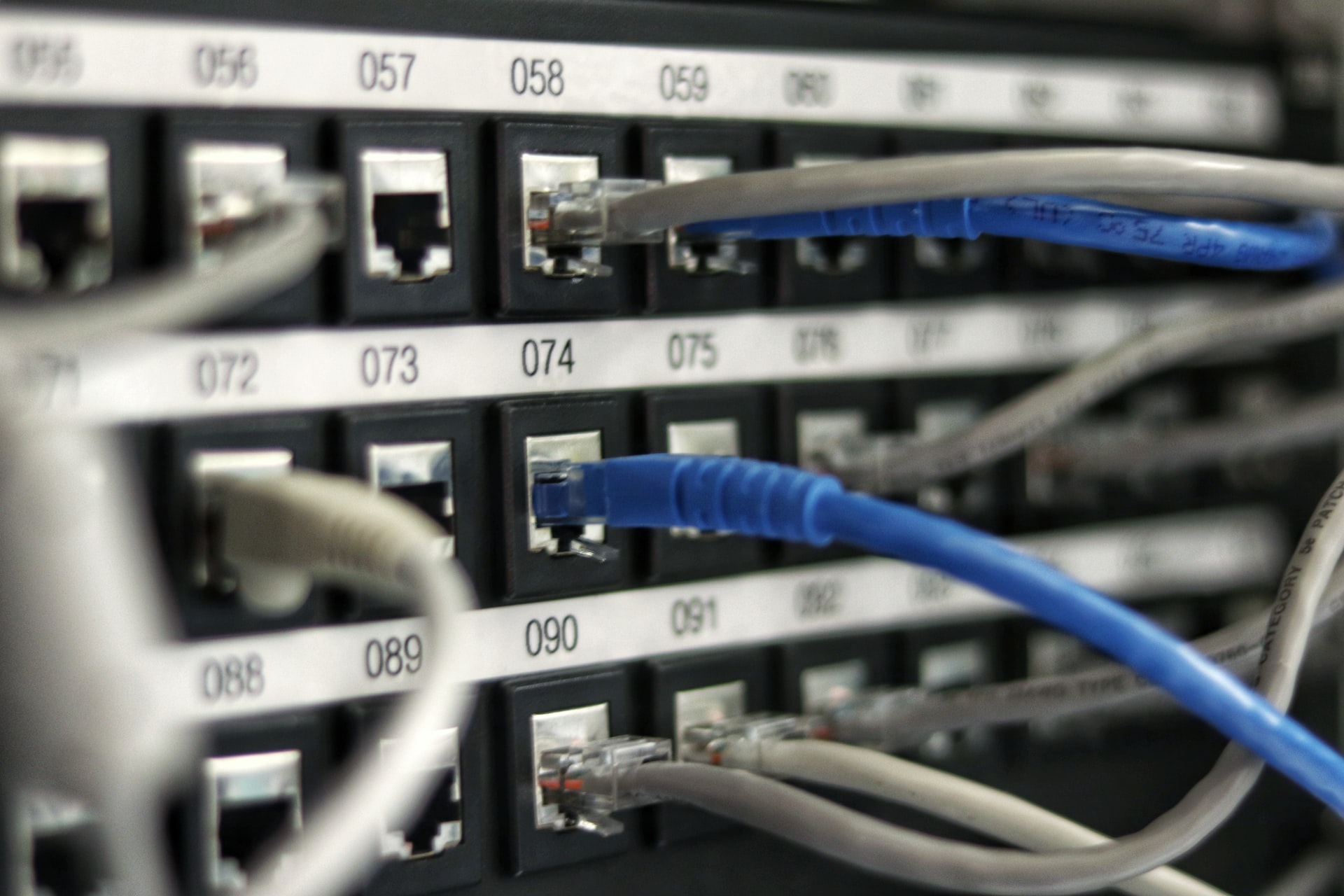Networking is the backbone of modern computing. It enables communication between computers and devices, sharing resources, and providing access to the internet. Networking is a complex topic, but its basics are essential to understanding how the internet and modern communication systems work. In this blog, we will discuss the fundamentals of networking.
Networking refers to the connection of computers, devices, or even networks, to enable communication and resource sharing. At the core of networking, there are two types of components, the hardware, and software.
Hardware components of networking include network interface cards, routers, switches, modems, cables, and other physical devices that allow communication between devices. Software components include protocols, services, and applications that enable the communication between devices.
Networking models
To understand the basics of networking, it’s important to understand the models that govern how communication takes place. There are two primary models: the OSI model and the TCP/IP model.
The OSI model, developed by the International Organization for Standardization (ISO), is a conceptual framework for understanding how communication occurs between devices. The model is divided into seven layers, each with its own specific functions, and the layers build upon each other to enable communication. The seven layers are:
- Physical layer
- Data Link layer
- Network layer
- Transport layer
- Session layer
- Presentation layer
- Application layer
The TCP/IP model, on the other hand, is a more practical model that was developed by the US Department of Defense. The TCP/IP model is composed of four layers, and they are:
- Network Access Layer
- Internet Layer
- Transport Layer
- Application Layer
Understanding these models is crucial to understanding networking as they provide a common language for communication between devices.
IP Addressing
IP addressing is the foundation of networking. An IP address is a unique numerical identifier assigned to every device on a network. IP addresses can be public or private, and they are either dynamic or static.
A public IP address is a unique address assigned to a device by the internet service provider (ISP), and it’s used to identify devices on the internet. A private IP address, on the other hand, is a unique address assigned to devices on a private network. Private IP addresses are not directly accessible from the internet.
IP addresses can be dynamic or static. A dynamic IP address is assigned by a DHCP server, and it changes each time a device connects to the network. A static IP address, on the other hand, is a fixed IP address assigned to a device. Static IP addresses are commonly used in servers or network devices, where a stable IP address is required.
Protocols
Protocols are the set of rules that govern how data is transmitted across a network. There are several protocols used in networking, and some of the most common include TCP, UDP, HTTP, FTP, SMTP, and DNS.
TCP (Transmission Control Protocol) is a connection-oriented protocol used for reliable data transmission. TCP establishes a connection between two devices, and data is transmitted in packets across the connection.
UDP (User Datagram Protocol) is a connectionless protocol used for the transmission of real-time data, such as video and voice. Unlike TCP, UDP does not establish a connection before transmitting data.
HTTP (Hypertext Transfer Protocol) is a protocol used for the transfer of web pages over the internet. HTTP allows web browsers to communicate with web servers, and it’s the foundation of the world wide web.
FTP (File Transfer Protocol) is a protocol used for the transfer of files between devices on a network. FTP is commonly used to upload files to a web server or download files from a remote server.
SMTP (Simple Mail Transfer Protocol) is a protocol used for the transmission of email over the internet.
Networking Hardware
Networking hardware is a critical component of modern computing. It comprises devices that enable communication between computers and other devices, sharing of resources, and accessing the internet.
Networking hardware can be classified into two broad categories, network interface devices and network devices. A network interface device, or NID, is a hardware component that allows devices to connect to a network. It is also known as a network interface card (NIC), a network adapter, or a LAN adapter. NIDs come in different types, such as wired and wireless adapters, and they can be installed internally or externally.
Wired NICs are commonly used in desktop computers, servers, and routers. They are connected to the network via a physical cable, such as Ethernet, coaxial, or fiber optic cables. On the other hand, wireless NICs are used in laptops, tablets, smartphones, and other mobile devices. They allow wireless communication between devices, and they use radio waves to transmit data.
Network devices are used to manage the flow of data across a network. They include routers, switches, hubs, and modems. Routers are used to connect different networks, such as the internet and a local area network (LAN). They use a routing table to determine the best path for data to travel between networks. Switches are used to connect devices within a network. They create a virtual network by linking devices through a switch fabric, and they manage the flow of data between devices.
Hubs are used to connect multiple devices within a network. They work by broadcasting data to all devices connected to them, which can cause network congestion. Modems are used to convert digital data into analog signals for transmission over a telephone line. They are commonly used to provide internet access to homes and businesses.
Networking hardware is essential to enable communication between devices and the sharing of resources. Without it, devices would not be able to connect to the internet or communicate with each other. Networking hardware also plays a critical role in ensuring network security, as it can be used to implement firewalls, encryption, and other security measures. Networking hardware is a vital component of modern computing. It includes network interface devices and network devices such as routers, switches, hubs, and modems. Understanding networking hardware is essential to understanding how devices connect and communicate with each other.
Networking Software
Networking software is a critical component of modern computing, and it enables devices to communicate, share resources, and access the internet. It can be classified into two broad categories, system software and application software. System software is a type of software that provides a platform for other software to run. It includes operating systems, device drivers, and firmware.
Operating systems (OS) are the software that manages computer hardware and software resources. The OS provides a platform for running applications and manages system resources such as memory, CPU, and storage. Examples of popular operating systems include Windows, macOS, and Linux.
Device drivers are software programs that allow the operating system to communicate with hardware devices. Without device drivers, the operating system would not be able to communicate with devices such as printers, scanners, and cameras.
Firmware is software that is embedded in hardware devices such as routers, switches, and modems. Firmware is responsible for managing the operation of the hardware device and providing functionality such as security, performance, and stability.
Application software is a type of software that is designed for specific tasks or applications. It includes programs such as email clients, web browsers, and media players. Email clients are software programs that allow users to send and receive email messages. Examples of popular email clients include Microsoft Outlook, Gmail, and Mozilla Thunderbird. Web browsers are software programs that allow users to access websites and web-based applications. Examples of popular web browsers include Google Chrome, Mozilla Firefox, and Microsoft Edge. Media players are software programs that allow users to play music and video files. Examples of popular media players include Windows Media Player, iTunes, and VLC.
Importance of Networking Software Networking software is essential to enable communication between devices and the sharing of resources. Without networking software, devices would not be able to connect to the internet or communicate with each other. Networking software also plays a critical role in ensuring network security, as it can be used to implement firewalls, encryption, and other security measures.
Networking software is a vital component of modern computing. It includes system software such as operating systems, device drivers, and firmware, as well as application software such as email clients, web browsers, and media players. Understanding networking software is essential to understanding how devices connect and communicate with each other. By understanding the basics of networking software, you can gain a valuable skill set that is increasingly relevant in the modern world.
Conclusion
In conclusion, understanding the basics of networking is crucial for anyone interested in the field of IT. Networking enables devices to communicate, share resources, and access the internet. The hardware and software components of networking work together to facilitate communication between devices, and IP addressing and protocols are fundamental to how data is transmitted across a network. By understanding the basics of networking, you can gain a valuable skill set that is increasingly relevant in the modern world. Whether you are interested in pursuing a career in IT or simply want to enhance your knowledge of technology, networking is a fundamental area to explore.

